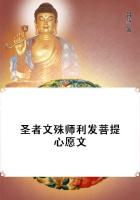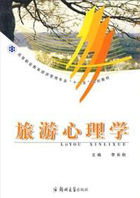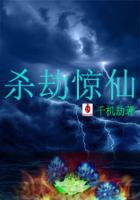What Carty has done is known by telephone men in all countries; but the story of Carty himself --who he is, and why--is new. First of all, he is Irish, pure Irish. His father had left Ireland as a boy in 1825. During the Civil War his father made guns in the city of Cambridge, where young John Joseph was born; and afterwards he made bells for church steeples. He was instinctively a mechanic and proud of his calling. He could tell the weight of a bell from the sound of it. Moses G. Farmer, the electrical inventor, and Howe, the creator of the sewing-machine, were his friends.
At five years of age, little John J. Carty was taken by his father to the shop where the bells were made, and he was profoundly impressed by the magical strength of a big magnet, that picked up heavy weights as though they were feathers.
At the high school his favorite study was physics; and for a time he and another boy named Rolfe--now a distinguished man of science--carried on electrical experiments of their own in the cellar of the Rolfe house. Here they had a "Tom Thumb" telegraph, a telephone which they had ventured to improve, and a hopeless tangle of wires. Whenever they could afford to buy more wires and batteries, they went to a near-by store which supplied electrical apparatus to the professors and students of Harvard. This store, with its workshop in the rear, seemed to the two boys a veritable wonderland;and when Carty, a youth of eighteen, was compelled to leave school because of his bad eyesight, he ran at once and secured the glorious job of being boy-of-all-work in this store of wonders. So, when he became an operator in the Boston telephone exchange, a year later, he had already developed to a remarkable degree his natural genius for telephony.
Since then, Carty and the telephone business have grown up together, he always a little distance in advance. No other man has touched the apparatus of telephony at so many points.
He fought down the flimsy, clumsy methods, which led from one snarl to another. He found out how to do with wires what Dickens did with words. "Let us do it right, boys, and then we won't have any bad dreams"--this has been his motif. And, as the crown and climax of his work, he mapped out the profession of telephone engineering on the widest and most comprehensive lines.
In Carty, the engineer evolved into the edu- cator. His end of the American Telephone and Telegraph Company became the University of the Telephone. He was himself a student by disposition, with a special taste for the writings of Faraday, the forerunner; Tyndall, the expounder;and Spencer, the philosopher. And in 1890, he gathered around him a winnowed group of college graduates--he has sixty of them on his staff to-day--so that he might bequeath to the telephone an engineering corps of loyal and efficient men.
The next problem that faced the young men of the telephone, as soon as they had escaped from the clamor of the mysterious noises, was the necessity of taking down the wires in the city streets and putting them underground. At first, they had strung the wires on poles and roof-tops.
They had done this, not because it was cheap, but because it was the only possible way, so far as any one knew in that kindergarten period.
A telephone wire required the daintiest of handling.
To bury it was to smother it, to make it dull or perhaps entirely useless. But now that the number of wires had swollen from hun-dreds to thousands, the overhead method had been outgrown. Some streets in the larger cities had become black with wires. Poles had risen to fifty feet in height, then sixty--seventy--eighty. Finally the highest of all pole lines was built along West Street, New York--every pole a towering Norway pine, with its top ninety feet above the roadway, and carrying thirty cross-arms and three hundred wires.
From poles the wires soon overflowed to housetops, until in New York alone they had overspread eleven thousand roofs. These roofs had to be kept in repair, and their chimneys were the deadly enemies of the iron wires. Many a wire, in less than two or three years, was withered to the merest shred of rust. As if these troubles were not enough, there were the storms of winter, which might wipe out a year's revenue in a single day. The sleet storms were the worst. Wires were weighted down with ice, often three pounds of ice per foot of wire. And so, what with sleet, and corrosion, and the cost of roof-repairing, and the lack of room for more wires, the telephone men were between the devil and the deep sea--between the urgent necessity of burying their wires, and the inexorable fact that they did not know how to do it.
Fortunately, by the time that this problem arrived, the telephone business was fairly well established. It had outgrown its early days of ridicule and incredulity. It was paying wages and salaries and even dividends. Evidently it had arrived on the scene in the nick of time--after the telegraph and before the trolleys and electric lights. Had it been born ten years later, it might not have been able to survive. So delicate a thing as a baby telephone could scarcely have protected itself against the powerful currents of electricity that came into general use in 1886, if it had not first found out a way of hiding safely underground.
The first declaration in favor of an underground system was made by the Boston company in 1880. "It may be expedient to place our entire system underground," said the sorely perplexed manager, "whenever a practicable method is found of accomplishing: it." All manner of theories were afloat but Theodore N. Vail, who was usually the man of constructive imagination in emergencies, began in 1882 a series of actual experiments at Attleborough, Massachusetts, to find out exactly what could, and what could not, be done with wires that were buried in the earth.













